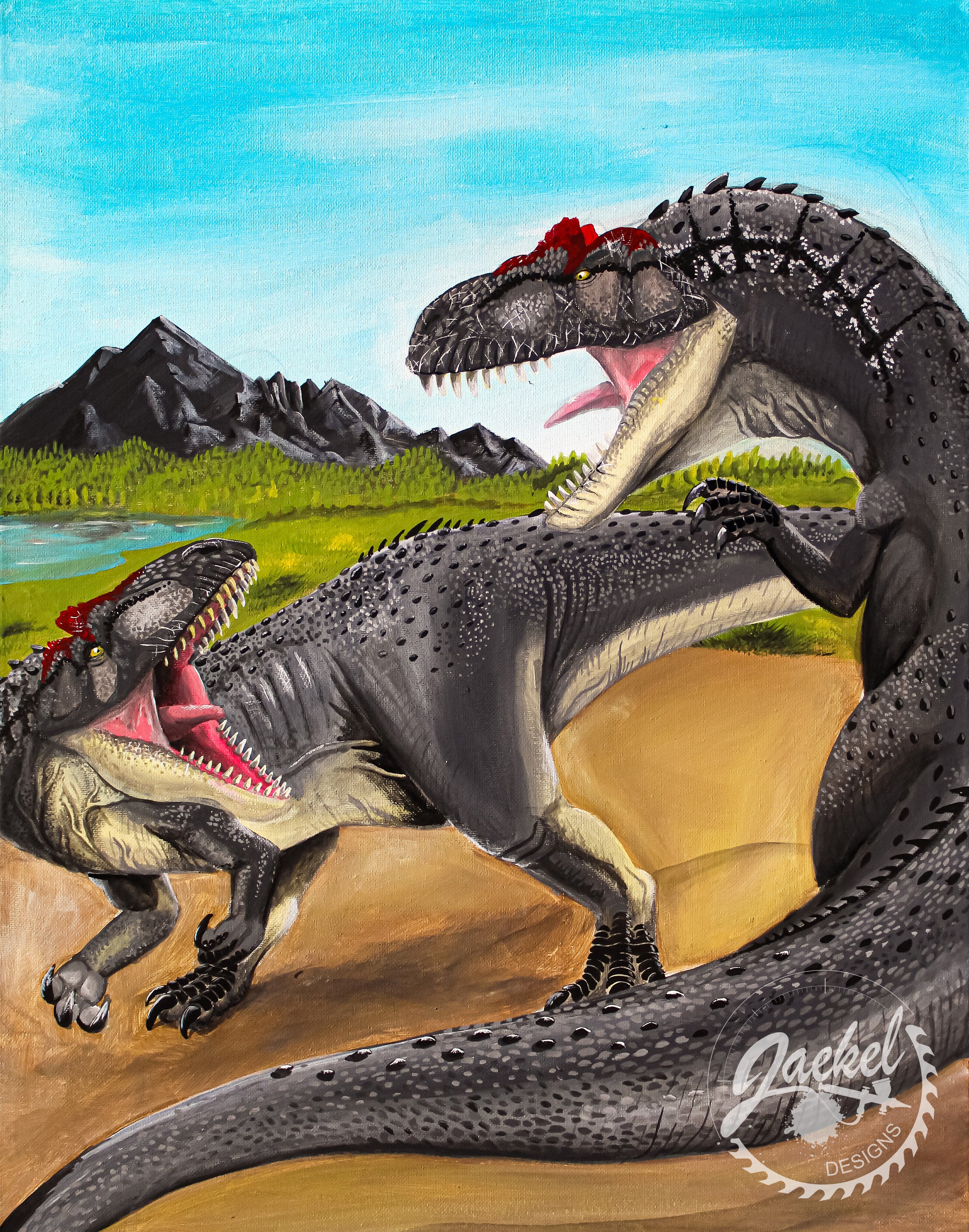PAINTING







WOOD WORKING



Dinosaur Paintings.
Allosaurus.
Allosaurus is a favourite for many paleontologists and dinosaur lovers due to its fossil abundance and preservation. It lived between 150 and 155 million years ago in the late Jurassic period in what is now the central United States (Utah boasts one of the largest deposits of Allosaurus fossils in the world), but they have been found in countries such as Portugal and Tanzania as well.
Allosaurus was a large bipedal carnivore, likely one of the largest to walk the earth at that point in time measuring between 39 and 43 feet long and standing up to 16 feet tall. It was almost as large as its cousins Tyrannosaurus and Giganotosaurus from the Cretaceous period.
Ankylosaurus.
Ankylosaurus is best known for its armored exterior resembling a tank, and its bone shattering tail club. It lived in what is now North America between 65 and 67 million years ago in the very end of the Cretacious period.
A quadrupedal herbivore, Ankylosaurus was slow moving and very massive. It’s armor-covered back and 10 foot long clubbed tail meant it was more than capable of protecting itself from predators when they were near so it spent most of its time lumbering around finding food to fuel its 35 foot long, 4 ton frame.
Baryonyx.
Baryonyx had massive 12” long claws on its front limbs believed to be used to help it catch fish which is why its name means “Heavy Claw”. It lived during the early Cretaceous period around 125 to 130 million years ago in what is now England.
Baryonyx was a large theropod dinosaur measuring between 25 and 33 feet in length and weighing just under 2 tons. The interesting curved shape of its jaw, coupled with its sharp cone-shaped teeth resembling that of a crocodile are two reasons it is believed that Baryonyx likely fed mainly on fish.
Brachiosaurus.
Brachiosaurus is probably best known for its abnormally long neck and upright posture like a giant giraffe, which is why it may be surprising to know its name means; “Arm Lizard”. This is because, much like its long neck, its front limbs were also very large giving it its trademark posture.
Brachiosaurus lived during the late Jurassic period between 150 and 154 million years ago in what is now the Western United States. Measuring between 59 and 69 feet long and weighing in at nearly 60 tons it was one of the largest sauropods of its time.
Carnotaurus
Carnotaurus, or “the Meat-Eating Bull” was one of a number of large theropods who had distinctive crests on their heads, in this case a thick horn above either eye.
Living during the late Cretaceous period between 69 and 71 million years ago, Carnotaurus roamed what is now South America. Smaller than many other theropods from this era, Carnotaurus measured upwards of 26 feet in length and weighed around 1.35 tons.
Giganotosaurus
At 39-44 feet in length (even larger than Tyrannosaurus) Giganotosaurus has earned the name “Giant Southern Lizard”. It lived between 100 and 97 million years ago in what is now Patagonia in South America, and after its discovery in 1993 it sparked a conversation among paleontologists to rethink how large theropods could get. With a massive 6-foot long head its believed to have been a powerful enough hunter to take down massive sauropods like Argentinosaurus.
Images shot at various location for Jaekel Designs
Contact Me
For custom paintings, airbrush art and more.






